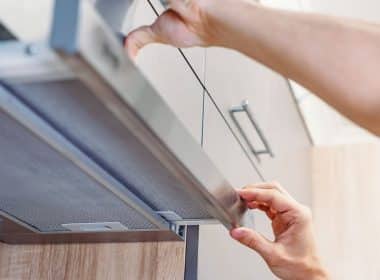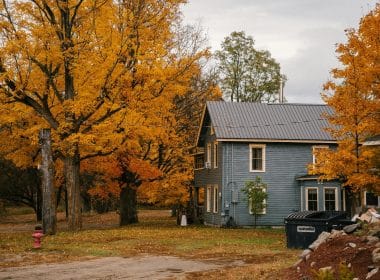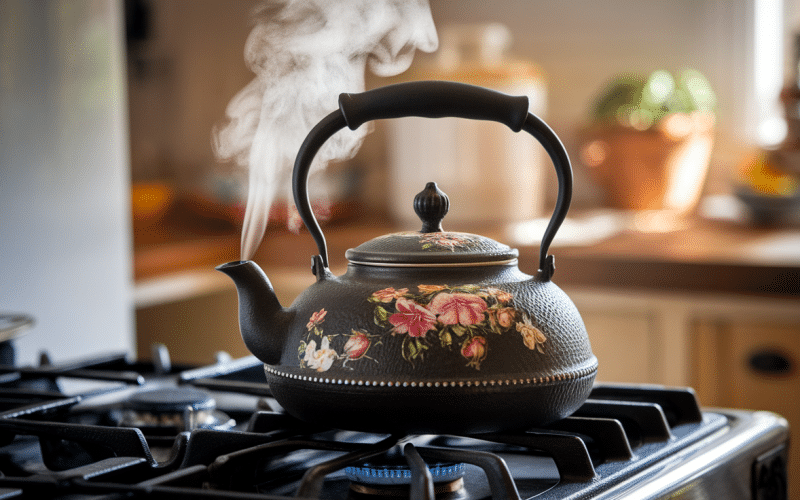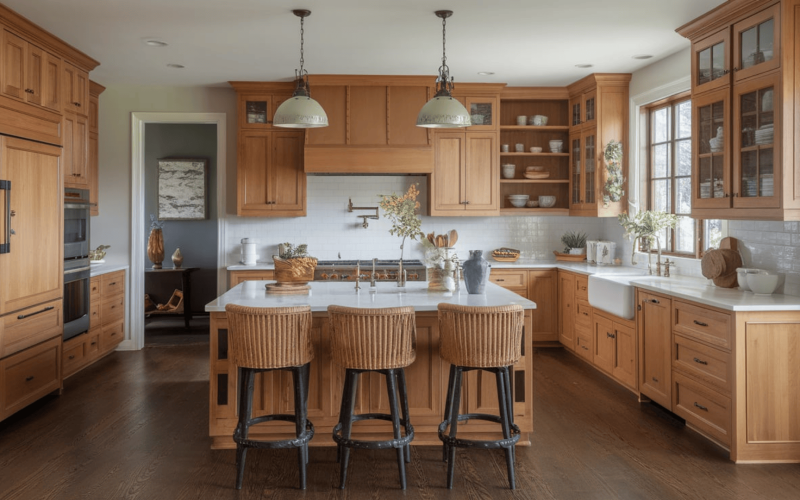Cast iron tea kettles have become a popular choice worldwide. Their roots stretch back hundreds of years in Japanese culture.
These solid, well-built kettles offer several key advantages that set them apart from other options.
Their excellent heat retention keeps water at the ideal temperature longer, while their sturdy construction means they can last for generations with proper care.
Many tea drinkers also value how iron can add useful minerals to water, often resulting in better-tasting and smoother tea.
This blog covers everything you need to know about cast iron tea kettles – from their history and types to how to choose, maintain, and use them to make the perfect cup of tea.
What is a Cast Iron Tea Kettle?
A cast iron tea kettle stands out from kettles made of other materials, such as steel, copper, or glass, because of its solid, heavy-duty build.
These kettles are made by pouring molten iron into molds, creating a thick-walled vessel that can handle high heat and last for decades.
The Japanese Tetsubin design has shaped how we see cast iron kettles today.
Dating back hundreds of years in Japan, these kettles were first used during tea events and gatherings.
The Nambu region became known for making high-quality iron kettles with careful methods that tea lovers still value today.
Traditional Tetsubin kettles have no enamel coating inside and were made just for heating water, not brewing tea directly.
Modern versions often retain the old designs’ exterior appearance while adding features like enamel linings and steel mesh strainers to facilitate use in today’s kitchens.
Benefits of Using a Cast Iron Tea Kettle
Cast iron tea kettles offer several key advantages that make them worth considering for any tea drinker who values both function and form.
1. Heat Retention
Cast iron holds heat much longer than other materials.
Once hot, these kettles keep water at the right temperature for making tea without quick cooling.
This means your second or third cup will be just as good as your first without needing to reheat the water.
2. Health Benefits
When you use an uncoated cast iron kettle, small amounts of iron can mix into your water.
This can add iron to your diet, which helps carry oxygen in your blood.
Many people don’t get enough iron from food alone, making this a helpful extra boost.
3. Aesthetic Appeal
These kettles look stunning on any stovetop or table.
From simple black designs to kettles with flowers, dragons, or geometric patterns, there’s a style for every home.
Colors now go beyond basic black to include green, blue, and red options that add warmth to your kitchen while maintaining its classic charm.
Different Types of Cast Iron Tea Kettles
When shopping for cast iron tea kettles, you’ll find several distinct styles, each serving different needs and originating from various tea traditions.
Tetsubin Kettles

Traditional Japanese Tetsubin kettles are made from pure cast iron with no inner coating.
True Tetsubin kettles from Japan often have detailed patterns on their outer surface, such as hobnails (small bumps), flowers, or nature scenes.
Companies like Oitomi and Iwachu still make these kettles using methods passed down through many years.
Modern Cast Iron Tea Kettles

Today’s cast iron kettles often mix old looks with new features.
Many now include:
- Whistling caps that tell you when water boils
- Enamel coatings inside to stop rust and make cleaning easier
- Bases that work with all stovetops, including induction
- Removable steel strainers for loose tea
- Size options from small 0.6 liter models to large 3-quart family sizes
Brands like Lodge, Staub, and Le Creuset offer these updated designs, and prices vary between $30 and $230, depending on size and brand.
Vintage Cast Iron Kettles

Older cast iron kettles can be found at second-hand stores, yard sales, or online markets.
These often have a story behind them and may show signs of long use.
When buying a vintage kettle, check for:
- Cracks or major rust spots that might affect safety
- Original parts like lids and handles
- Maker’s marks that help identify age and maker
With good care, these older kettles can still work well, though they may need careful cleaning and re-seasoning before their first use.
How to Choose the Best Cast Iron Tea Kettle
Finding the right cast iron tea kettle means thinking about how you’ll use it and what matters most to you.
Here’s what to look for when making your choice.
1. Capacity
The right size kettle depends on how many cups you make at once:
- Small kettles (under 0.8 quarts): Good for 1-2 people or small spaces
- Medium kettles (0.8-1.3 quarts): Works well for 2-4 people
- Large kettles (over 1.4 quarts): Best for families or when you have guests
Think about your daily needs rather than occasional use when picking a size.
Too small means frequent refills, while too large wastes energy, heating unused water.
2. Design and Color
Cast iron kettles come in many styles:
- Plain black kettles offer a timeless look that fits most kitchens
- Colored enamel outside (green, blue, red) adds a bright touch while keeping iron benefits
- Patterned kettles with flowers, checks, or hobnail textures show attention to detail
- Simple modern shapes versus round, pot-bellied traditional forms
Your choice should match your kitchen style and how you plan to use the kettle – for brewing only or as a display piece, too.
3. Compatibility with Stovetops
Not all kettles work on all stoves:
- Gas and electric coil stoves work with any cast-iron kettle
- Flat glass or ceramic stovetops need kettles with flat, smooth bottoms
- Induction stoves need kettles labeled “induction ready.”
Check product details for the “induction ready” text if you have a newer stove.
4. Additional Features
Helpful extras to consider:
- Whistling spouts that signal when water boils
- Stay-cool handles that don’t heat up
- Removable steel mesh strainers for loose tea
- Flip-up handles for easier storage
- Stands or trivets are included to protect surfaces
These add-ons might increase the price but can make daily use much more pleasant.
Maintenance Tips for Cast Iron Tea Kettles
Taking good care of your cast iron tea kettle will help it last for many years and keep your tea tasting its best.
With a few simple habits, you can prevent common problems and maintain your kettle’s quality.
Preventing Rust
Always dry your cast iron kettle fully after each use – this is the key rule to prevent rust.
Empty all the water after brewing and leave the lid off until the inside feels completely dry.
For uncoated kettles, apply a light coat of vegetable oil to the inside surface every few months. Store your kettle in a dry place, not near a sink or where steam collects.
If you notice small rust spots forming, don’t worry – they can be removed with gentle scrubbing using a soft brush and water.
Cleaning
Clean your cast-iron kettle with warm water whenever possible. Avoid soap, as it can strip away helpful oils from uncoated kettles.
For stubborn deposits, fill the kettle with water and bring it to a boil, then let it cool before emptying and wiping it clean.
Never use steel wool or harsh cleaners on any cast iron kettle. For kettles with enamel inside, you can use mild dish soap if needed, but rinse well.
Hard water buildup can be removed by boiling a mixture of equal parts water and white vinegar, then rinsing thoroughly.
Seasoning the Kettle
Uncoated cast iron kettles need proper seasoning to build up a natural non-stick layer.
To season a new kettle or restore an old one, wash it with warm water, dry it completely, and then coat the inside with a thin layer of food-grade oil, such as flaxseed or vegetable oil.
Heat the kettle gently on low heat for about 10 minutes, let it cool, then wipe away any extra oil.
This process creates a barrier between the iron and water, improving your kettle’s lifespan and the taste of water heated in it.
Coated or enameled kettles don’t need seasoning.
Cast Iron vs. Other Tea Kettle Materials
| Material | Heat Properties | Durability | Care Needs | Weight | Cost | Effect on Taste |
|---|---|---|---|---|---|---|
| Cast Iron | Heats slowly but holds heat for a long time; keeps tea warm for extended periods | It can last for decades or even across generations with proper care | It needs thorough drying; it may require occasional oiling to prevent rust | Heavy; can be hard to lift when full | $25-$250 depending on quality and brand | May add iron minerals to water; many tea fans report a smoother, richer taste |
| Stainless Steel | Heats quickly but loses heat faster than cast iron | Very good; resistant to dents and scratches | Low maintenance; dishwasher safe in many cases | Medium weight; easy to handle | $20-$100 for good quality | Neutral; doesn’t change water taste |
| Glass | Heats relatively quickly; loses heat faster than metals | Fragile; can break if dropped or exposed to sudden temperature changes | Easy to clean; clearly shows build-up | Light to medium-weight | $15-$60 | Completely neutral, allows you to watch the water boil |
| Aluminum | Very fast heating; poor heat retention | Medium: can dent and scratch somewhat easily | Easy care but may discolor over time | Very light; easy to handle even when full | $10-$40 | It may impart a slight metallic taste to water if not coated |
| Ceramic | Slow to heat; good heat retention | Breakable but more durable than glass | Easy to clean but can chip | Medium to heavy | $20-$80 | Neutral; doesn’t affect taste |
| Copper | Fastest heat conductor of all materials | Fair; can dent and needs occasional polishing | Requires special care to maintain shine | Medium weight | $50-$200+ | It can affect taste unless lined with another metal |
When choosing between these materials, think about what matters most to you: heat retention, weight, care needs, or taste effects.
Cast iron stands out for keeping tea hot and adding possible health benefits, while other materials might win on price or ease of use.
Real-Life Use: Brewing Tea with a Cast Iron Tea Kettle
Using a cast-iron kettle can make a real difference in your daily tea routine.
Here’s how to get the best results and what to expect when brewing different teas.
Tips on Using Cast Iron Kettles for Different Types of Tea
For green tea, heat water to about 175°F in your cast-iron kettle.
Bring to a full boil for black and herbal teas. Oolong teas need water around 190°F, so boil them and then cool them slightly.
White teas brew best at lower temperatures, around 160°F.
Cast iron kettles are ideal for making multiple cups as they keep water at a steady temperature without reheating. This works well for tea sessions where you’ll brew several times from the same leaves.
How Cast Iron Affects the Flavor and Temperature of Your Brew
Water from cast iron kettles often makes tea taste smoother and less bitter.
This happens because iron can neutralize harsh compounds in water.
In uncoated kettles, small amounts of iron enter the water, adding a subtle richness that pairs well with darker teas.
The excellent heat retention of cast iron ensures your tea steeps at a consistent temperature throughout brewing.
This steady heat helps extract a full range of flavors without the sudden cooling that can happen with thinner kettles.
Conclusion
Cast iron tea kettles offer clear benefits: they keep your water hot longer, may add helpful iron to your diet, and look beautiful in any kitchen.
They also tend to make tea taste smoother. However, they do need more care than other kettles and are heavier to handle.
If you enjoy tea daily, value items that last for years, and don’t mind a bit of extra upkeep, a cast-iron kettle is a worthy choice.
A lighter stainless steel or glass kettle might be better for those who prefer low-maintenance options or have wrist issues.
Choose based on how you make tea and what matters most to you.







